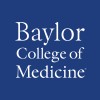Human Milk Cream as a Caloric Supplement in Pre-Term Infants
Prematurity

About this trial
This is an interventional diagnostic trial for Prematurity focused on measuring breastfed, human milk cream, human milk fat, caloric supplement
Eligibility Criteria
Inclusion Criteria:
- Birth weight 750 - 1250g
- Able to adhere to expected feeding protocol of mother's own milk/donor milk with fortification of Prolacta® fortifier
- Reasonable expectation of survival
- Enteral feeding must begin before the 21st day of life
Exclusion Criteria:
- Decision to not start minimum enteral feed before day 21 of life
- Unable to obtain informed consent from parent/guardian prior to the initiation of fortification of enteral feeding
- Enrolled in any other clinical study affecting nutritional management during the study period
- Presence of clinically significant congenital heart disease or major congenital malformations
- Reasonable potential for early transfer to a non-study institution
Sites / Locations
- Baylor College of Medicine / Texas Children's Hospital
- UT Health Science Center, San Antonio
Arms of the Study
Arm 1
Arm 2
Experimental
No Intervention
Human Milk Cream Group
Control Group
For infants randomized to the human milk cream group, the human milk (either mother's own or donor) being provided to the infant will be tested each time a new container is used to prepare feedings. The test will be for the caloric content of the milk using a commercially available device provided for this purpose. If the caloric level falls below 20 kcal/oz for any test, then an appropriate amount of human milk cream will be added to the milk to bring the content as close as possible to 20 kcal/oz. The amount added will be calculated to the nearest mL rounding down for 0.1-0.4mL and up for 0.5-0.9 mL to avoid imprecision due to the measuring device used in the nutrition preparation area.
For infants randomized to the Control group, human milk and human milk derived fortifier will be provided according to the institutional standard of care and there will be no use of the milk analysis (mother's own or donor), which is typical for the vast majority of neonatal intensive care units.
Outcomes
Primary Outcome Measures
Secondary Outcome Measures
Full Information
1. Study Identification
2. Study Status
3. Sponsor/Collaborators
4. Oversight
5. Study Description
6. Conditions and Keywords
7. Study Design
8. Arms, Groups, and Interventions
10. Eligibility
12. IPD Sharing Statement
Learn more about this trial
